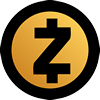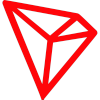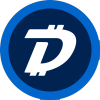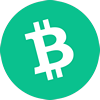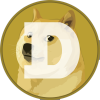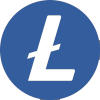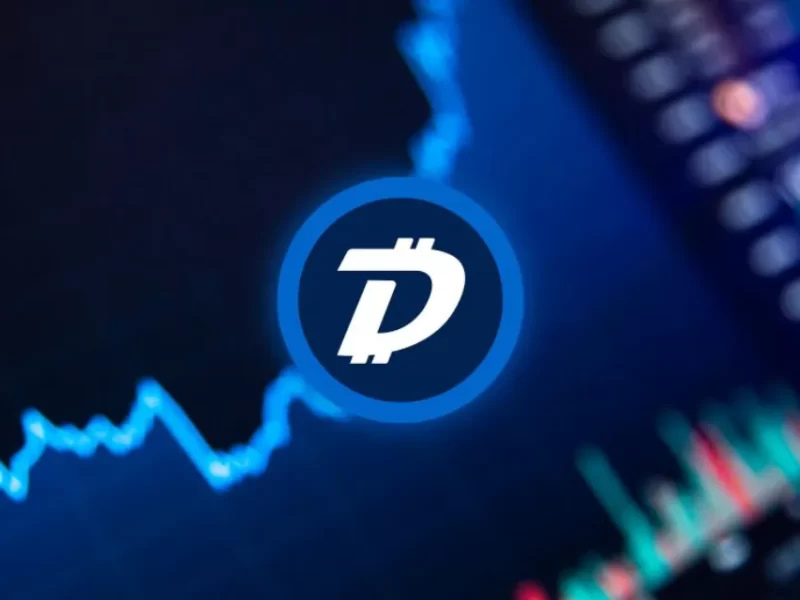Solana is a crypto computing platform that aims to achieve high transaction speeds without sacrificing decentralization. It employs a bundle of novel approaches, including the “proof of history” mechanism. Solana’s native cryptocurrency is SOL, which is used to pay transaction fees and for staking.
Solana (SOL) Price
What is Solana (SOL)?
1. Who Controls Solana (SOL)?
Solana does not have plans for on-chain governance at the moment. It has a delegated proof-of-stake (DPoS) system that allows token holders to select the validator set. However, the project does not have a roadmap for a token-weighted voting system.
Solana officially launched in March 2020. Its founder, Anatoly Yakovenko, designed Solana to support smart contracts and the creation of decentralized applications, or dapps.
The blockchain operates on both a proof of history (PoH) and proof of stake (PoS) model. PoS allows validators to verify transactions according to how many coins they hold, while PoH allows for those transactions to be timestamped and verified more quickly, Yakovenko wrote in the Solana white paper.
2. Who Created Solana (SOL)?
It is Solana’s native and utility token that provides a means of transferring value as well as blockchain security through staking. SOL was launched in March 2020 and has strived to become one of the top 10 cryptocurrencies entering the space by means of total market capitalization.
Solana is a public base-layer blockchain protocol that optimizes for scalability. Its goal is to provide a platform that enables developers to create decentralized applications (dApps) without needing to design around performance bottlenecks. Solana features a new timestamp system called Proof-of-History (PoH) that enables automatically ordered transactions. It also uses a Proof of Stake (PoS) consensus algorithm to help secure the network. Additional design goals include sub-second settlement times, low transaction costs, and support for all LLVM compatible smart contract languages.
3. Solana (SOL) Pros and Cons
Solana (SOL) Pros:
- Fast Transactions And Low Fees.
- NFTs And Smart Contracts.
- Solana Has A Low Environmental Impact.
- Stake Solana (SOL) For Rewards.
- Solana has achieved high levels of scalability by leveraging the Proof of History and several other breakthrough innovations.
- With billions of users on board, Solana has achieved economies of scale and kept the application fees extremely low.
- Solana ensures composability between projects. Users do not need to deal with multiple shards or layer-2 systems.
Solana (SOL) Cons:
- Network Stability.
- Solana Has Fewer Projects.
- Inflation.
- Solana Is Not Decentralised Enough.
- Many implementations still await their launch on the Mainnet Beta version.
- Satisfactory hardware setup for Solana is relatively costlier.
- Solana has been criticized for not being decentralized enough.
4. The Difference Between Solana (SOL) and Traditional Currencies
The main difference between them is, the traditional currency is a centralized system and bitcoins are decentralized one and peer-peer systems. Hence there are no central authorities to regulate rules and regulations on a bitcoin transaction. But a traditional currency is strictly regulated by the governmental authorities. Both the bitcoins and fiat currency have values which can be used for buying and selling of goods in the market.
- Flexibility
With traditional currency functioning for five days a week and die to transaction restriction, there is a chance of freezing of currency. There is no limit in the number of currencies, being printed, and hence when there is inadequate currency, it will affect the buyers and sellers, resulting in inflation.
- No Fraudulent Activity
If you want to transact with a traditional currency system, the users have to provide personal details like name, address, phone number, and lots more. So, with the internet technology, the malicious user will be able to hack the account details of the traditional currency system easily. Traditional currency can suffer from double-spending, where the same money is used for more than one transaction.
- Reduced Cost
In a traditional banking system, for making a national transaction, it will take 2-3 working days, and the transaction fees will be high. In the case of international transactions, the transaction fee will be very higher, and it will take 15 days to complete the transaction. In a Cryptocurrency system like bitcoins, there is no transaction fee for making a national transaction. The transaction will also take place in seconds or within 24 hours.
5. Is It Safe To Use Solana (SOL)?
Solana is a blockchain that has smart contract functionality. Its native cryptocurrency is SOL. Being 80% down from its all-time high and currently trading at $52.78 as of 20th May, people are questioning where Solana (SOL) will go from here. Launched in March 2020 Solana (SOL) provided excellent returns to the early investors, but those who invested six months ago are struggling to see a way of recouping their money.
Although lots of NFT marketplaces have launched on the Solana network there is fierce competition with those using the Ethereum blockchain and the likes of OpenSea are gradually capturing more of the NFT market share making it harder for Solana (SOL) to find a way back.
It’s predicted that Solana (SOL) could fall even further in value as investors worldwide are seeking a safer form of investment when putting their funds into crypto projects. We saw recently the crash that occurred with Terra (LUNA) and the de-pegging of UST leading to an almost 100% loss for most investors. This sparked an uproar amongst the crypto community thus wanting to back projects that have real assets behind them like Chronoly.
6. Is Solana (SOL) Legal?
Solana (SOL) is a real, legit crypto project and not a cryptocurrency scam. One of the big attractions of Solana is that it can process around 50,000 transactions per second (TPS). To put that in perspective, Ethereum processes between 15 and 45 TPS, though it is in the process of an upgrade to Eth2 that will make it somewhat faster.
Speed isn’t everything, but few cryptocurrencies come close to Solana in this race. What’s also noteworthy is that Visa says it processes about 24,000 TPS, meaning Solana could give existing payment networks a run for their money.
How Does Solana (SOL) Work?
Solana is one of the fastest programmable blockchains in crypto right now. It’s also one of the many coins viewed as potential successors to the Ethereum (ETH) throne.
If you’re wondering what a programmable blockchain is, let’s start by looking at the technology behind Bitcoin (BTC) — non-programmable blockchain. It’s a huge, tamper-proof, decentralized ledger that records transactions. It enables people to transfer money without involving a third party like a bank.
Programmable blockchains are on another level. They can store tiny pieces of code called smart contracts. These can be programmed to carry out certain actions when the conditions of the contract are fulfilled. For example, if you rented a car, the dealership might set up a smart contract to automatically pay back your deposit when the car was returned in good condition. Or a farmer’s insurance contract might pay out in the event of certain extreme weather conditions.
Ethereum was the first programmable blockchain and attracted a host of developers who used it to build decentralized applications (dApps). But it has been a victim of its own success; the network is congested due to heavy traffic. Its fees have also become expensive and it has a large carbon footprint. A major upgrade to Eth2 is in the works to address these issues, but it won’t be fully rolled out until at least 2022.
How to Make Money with Solana (SOL)?
Here are quite a few approaches for us to make money with Solana (SOL), such as Mining, Buying & Hold Bitcoins, Accept Payments in Solana (SOL), Earning Solana (SOL) by turning into an Affiliate, Lending Solana (SOL), and Micro Earnings, and Trading.
- Solana (SOL) Mining
- Buy & Hold Solana (SOL)
- Accept Payments in Solana (SOL)
- Determine how you’ll use Solana (SOL)
- Find a Solana (SOL) wallet
- Find a Solana (SOL) payment processor
- Accept Solana (SOL) payments
- Becoming an Affiliate
- Lending Solana (SOL)
- Micro Solana (SOL) Earnings (Faucets, Offer Wall, Short Links, Surf Ads……)
- Solana (SOL) Games
- Micro Solana (SOL) Tasks
- Trade Solana (SOL)
Read More: How to Make Money With Solana (SOL)?
How to Buy Solana (SOL)?
1. Things To Know Before You Buy Solana (SOL)
Buying Solana (SOL) and holding onto it in hopes it will appreciate in value, is the most common form of “investing”. As with all investing, you should never invest more than you are willing/able to lose. This is especially true with Solana (SOL), since it’s still a very risky investment.
The most important thing to keep in mind when buying Solana (SOL) is to make sure to buy only from exchanges that have proven their reputation.
Another key tip is to make sure you don’t buy all of your Solana (SOL)s in one trade. Instead use a dollar cost averaging method—buy a fixed amount every month, week or even day throughout the year. This ensures that you buy the most Solana (SOL) when it’s on the rise, and less when it’s going down in price.
2. How to Buy Solana (SOL) on a Crypto Exchange
- Coinbase – Secure online platform for buying, selling, transferring, and storing cryptocurrency.
- eToro – Trade and invest in a diversified portfolio, starting at $10, or practise risk-free with a virtual portfolio.
- Bitfinex – Digital asset trading platform offering state-of-the-art services for digital currency traders and global liquidity providers.
- Binance – Low trading fees, a generously wide range of leverage, and high liquidity.
- KuCoin – A large cryptocurrency exchange offering the ability to buy, sell, and trade cryptocurrencies
Read More: What is a Crypto Exchange?
3. How to Buy Solana (SOL) with Cash
- Find a seller in your area who accepts cash.
- Select amount of coins and place an order.
- Receive account number from the seller.
- Deposit cash into the seller’s account.
- Upload your receipt to prove you made the deposit/trade.
- Receive Solana (SOL)!
4. How to Buy Solana (SOL) with Credit Card
Not all platforms will allow you to use a credit card to make your Solana (SOL) purchases. If you do choose a platform allowing such transactions, keep in mind that there may be extra fees associated with the purchase. Many credit card companies process cryptocurrency purchases via credit card as cash advances, which can incur high interest rates, among other fees.
5. How to Buy Solana (SOL) with Paypal
- Login to Paypal and Select Cryptocurrency
- Select ‘Solana (SOL)’
- Select ‘Buy’
- Choose How Much You Want to Buy
- Select Payment Method
- Hit the ‘Buy’ button
6. Should I Buy Solana (SOL) In 2022?
Read More: How to Buy Solana (SOL)?
How to Sell Solana (SOL)?
1. Things to Know Before You Sell Solana (SOL)
To get started with Solana (SOL), you’re going to need three things: an exchange, a wallet and the knowledge of how to buy the cryptocurrency. This last one is easy with our guide on how to buy Solana (SOL), but the other two are still important. The exchange allows you to buy Solana (SOL) from sellers, and the wallet gives you somewhere to store it long term.
When choosing an exchange, you should look for one with many users, good customer support and low fees. Three particularly popular exchanges with newcomers are Coinbase, Robinhood and Binance. However, there’s nothing really tying you to a specific exchange, so you can try new ones and quickly change at any time.
On the other hand, wallets can be much more complex. “Cold wallets” — physical devices holding cryptocurrencies offline — come with a steep up-front cost, but “hot wallets” — pieces of software that hold your coins on a computer — are often less secure. However, since hot wallets are fine for short-term storage and free to set up, it’s a good idea to start with them.
2. Sell Solana (SOL) in Cryptocurrency Exchanges
- Step 1: Set up an exchange account
- Step 2: Transfer your Solana (SOL) to your exchange wallet
- Step 3: Place a sell order
3. Sell Solana (SOL) in P2P Trading
- Step 1: Go to the P2P Trading Page
- Step 2: Choose to Sell and Set Your Currencies
- Step 3: Find a Buyer
- Step 4: Choose How Much You Want to Sell
- Step 5: Send the Offer
- Step 6: Confirm the Release
4. Sell Solana (SOL) in Solana (SOL) ATMs
- Step 1: Choose withdraw cash
- Step 2: Choose Solana (SOL) (these machines normally may support other cryptocurrencies)
- Step 3: Choose amount to withdraw
- Step 4: Send Solana (SOL) to given address QR code
- Step 5: Receive cash immediately as Solana (SOL) transaction is propagated on the network
Read More: How to Sell Solana (SOL)?
Can I Mine Solana (SOL)?
No, as a proof of stake coin Solana cannot be mined, no matter how powerful your hardware or deep your pockets. However Solana does offer two key ways you can help out the network in exchange for rewards: Staking, where you can stake Solana you already own with a validator to earn rewards.
Read More:
Can You Mine Solana – A Simple Guide to Mine SOL
How to Get Free Solana (SOL)?
Most genuine websites that allow you to earn free Solana (SOL) require you to spend money on other things like buying cloud computer mining power, connecting your CPU for mining, playing a game, or completing micro-tasks.
In other words, they offer free Solana (SOL)s as an advertisement for their services. Otherwise, it takes time and effort to get free Solana (SOL) given its current high value.
- Solana (SOL) Faucet
- Solana (SOL) PTC Sites
- Solana (SOL) Airdrop
- Solana (SOL) GameFi
- Solana (SOL) Bounties
- Learning About Solana (SOL)
- Shopping Reward
- Solana (SOL) Interest
- Owning a Solana (SOL) Faucet
- Write about Solana (SOL)
- Solana (SOL) Affiliate Program
- Free Solana (SOL) Cloud Mining
Read More: How to Earn Free Solana (SOL)?
What is a Solana (SOL) Wallet?
1. Solana (SOL) Wallets for Beginners
The best Solana wallet for you really depends on the type of investor you are. If you’re just starting out, then a wallet that’s both user-friendly and provides quick support is paramount since you’ll probably be needing some help in the beginning.
For more experienced investors, you should opt for the most secure option as you’ll likely have bigger funds to protect. You’ll probably also want a wallet that offers a wide array of features, especially for DeFi protocols and NFTs.
If you’re the latter user, it’s important that your wallet offers support for SPL tokens, which are essentially the equivalent of Ethereum’s ERC20 tokens and Binance Smart Chain’s BEP20 assets.
SPL stands for Solana Program Library, a group of on-chain programs that the Solana team manages and maintains. The SPL Token program serves as the official token standard of Solana’s blockchain and is custom-built for DeFi protocols and applications.
2. How To Make A Solana (SOL) Paper Wallet?
Although there are ways to manually generate a private key, the vast majority of paper wallet creators use a private key generator. Once a private and public key have been created, you are able to print a paper wallet, which because it’s not online doubles as a cold storage wallet. This will include the public and private key you’ve generated, usually as both a string of characters and QR codes.
Anyone with a paper wallet’s public key can send crypto to it as often as they like. Using the corresponding private key, you can move the crypto balance of the paper wallet into a software wallet. This transfers the funds to a new private key on your software wallet.
3. Ways To Set Up a Solana (SOL) Wallet
There are many Solana (SOL) wallets out there, and all of them differ in their characteristics. Mobile software wallets are great for day-to-day use, while desktop software wallets bring about a great balance between convenience and security. Lightweight web wallets are the best choice for quick online transactions. Cold encrypted hardware wallets like Ledger or Trezor are the best for long-term storage of bitcoin. However, unlike other options, hardware wallets aren’t free and cost $50 or more.
Set up a Solana (SOL) Software Wallet
- Mycellium
- Bread (BRD) wallet
- Bitcoin wallet
- Electrum
- Samourai
Set up a Solana (SOL) Web Wallet
- Coinbase
- Blockchain.info
- BTC.com
- Rahakott
- BitGo
Set up a Solana (SOL) Hardware Wallet
- Ledger
- Trezor
- BitLox
- KeepKey
How to Buy and Sell Solana (SOL) In Different Area?
1. How to Buy and Sell Solana (SOL) in India?
You can get Solana (SOL) in India mainly through buying and mining. To buy it, you can use several online exchanges such as WazirX, Coinbase, BuyUcoin, and CoinDCX. Choosing the best online exchange is another task, but here are a few things you should keep in mind while buying the cryptocurrency in India.
- It’s best to go with an exchange that allows you to withdraw cryptocurrency in INR to your personal online wallet for safekeeping
- Make sure that the internet connection is secure. Also, don’t forget to use safe internet practices like two-factor authentication and unique and strong passwords.
- KYC aka Know Your Customer verification is a must, at least in India. For that, you can use a PAN card and valid address proof
- Now, add the bank account that is linked to your PAN card. Verification will take around 2-3 days
After the verification is complete, you can start trading Solana (SOL) in India. Money from your bank accounts can be transferred using NEFT, RTGS, and debit and credit cards. Currently, the value of one Bitcoin is around 27 lakh; however, you don’t have to buy a whole coin to begin investing. You can buy Bitcoin in parts, i.e. small investments for as low as Rs 500. That way, you will own a small percentage of the cryptocurrency.
2. How to Buy and Sell Solana (SOL) in Canada?
- Sign up and get KYC (Know-Your-Customer) verified on a Canadian crypto exchange like Bitbuy.
- Deposit CAD to the exchange directly from your bank account.
- Buy Solana (SOL).
- Store Solana (SOL) on your exchange account or transfer it to a wallet.
3. How To Buy and Sell Solana (SOL) In The UK?
- Create a Coinbase account.
- Complete identity verification to access fiat payment options.
- Navigate to the Accounts and select the GBP wallet.
- Fund your account using Bank Transfer or other methods.
- Once the deposit is complete, go to the Buy/Sell page and select GBP to Solana (SOL).
4. How To Buy Solana (SOL) in the United States?
The best way to buy and sell Solana (SOL) in the USA is through an exchange such as Coinbase, Kraken, Gemini, Coinmama, Binance, or Changelly. There is a plethora of options available, so it is best to look at each of the exchanges’ processes for deposits and withdrawals, fees, and transaction speeds to determine which is best for you.
Solana (SOL) FAQs
1. Is Solana (SOL) Still Relevent?
Solana now boasts a theoretical peak capacity of 65,000 transactions per second and has become one of the most highly used blockchains today due to its speed and cheap transaction costs. Like almost any blockchain system today, Solana is still very new and not without controversy.
2. Is Solana (SOL) Going to Overtake Ethereum?
“The answer is yes.” Solana’s lack of gas fees and support for thousands of transactions per second make it attractive to portions of the NFT and decentralized finance (DeFi) market that Ethereum struggles to reach. The network serves as a sort of “natural hedge” to owning ether, he added.
3. What is Solana Used For?
Solana is a highly functional open source project that implements a new, permissionless and high-speed layer-1 blockchain. Created in 2017 by Anatoly Yakovenko, a former executive at Qualcomm, Solana aims to scale throughput beyond what is typically achieved by popular blockchains while keeping costs low.
4. Is Solana Better Than ETH?
Now that we have learned a bit more about both Solana and Ethereum, we can better compare the two blockchains. We know that Ethereum is the more secure and most decentralized option out of the two, and Solana is the quicker and more cost-effective network.
5. Should I Invest in Solana Crypto?
In some circumstances, adding to your portfolio when prices drop can be a sound investment strategy. But there are some caveats. Firstly, we don’t know what will happen to the crypto industry in the coming months — there’s no guarantee this is the bottom. Part of the reason crypto prices soared last year was there was so much money available. As that changes and the Fed becomes more hawkish, the crypto market may suffer. In addition, we don’t know what impact increased regulation will have.
Secondly, it doesn’t make sense to rush into a purchase just because the price is lower than it was three months ago. If you weren’t already planning to buy Solana, don’t do so now simply because it’s cheaper. Take the time to do your research. Make sure you understand Solana, how you think it might perform in the coming five to 10 years, and how it stacks up against its competitors. Decide whether you think Solana might be a good long-term investment.
Read More: Solana (SOL) Price Prediction 2022-2030
6. Why is Solana so Popular?
After less than two years of operation, it is the fourth largest crypto by market cap. It undoubtedly has many superior qualities to Ethereum. In particular, its high throughput of transactions and low gas fees have made it very popular with developers who are increasingly choosing Solana over Ethereum.
7. Is Solana Limited Supply?
There are currently 315,100,273 SOL coins in circulation with a total supply of 511,616,946 without an established maximum supply. The SOL token has two use cases.
Other Crypto Coins Guides
Get Started: Now you’re ready to take the next step and earn some Solana!
Earn free Solana (SOL) with BtcAdv by doing multiple tasks such as filling out Surveys, offerwalls, watching videos, Faucet, shortlink and much more! Additional features like achievements, lottery, and a referral system await!




